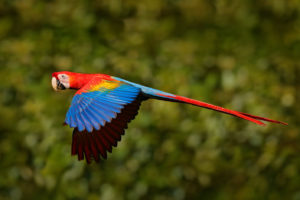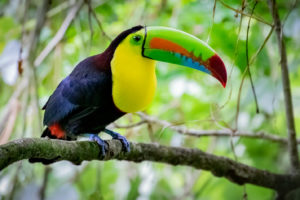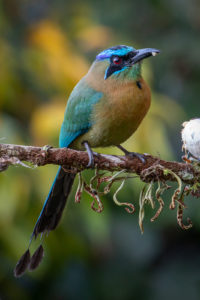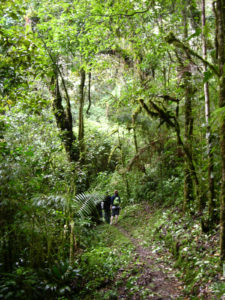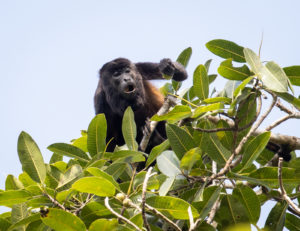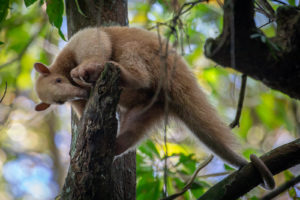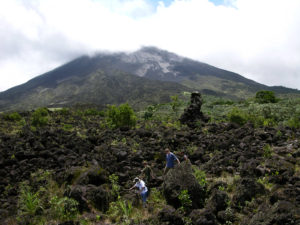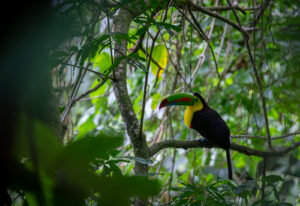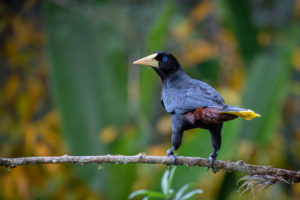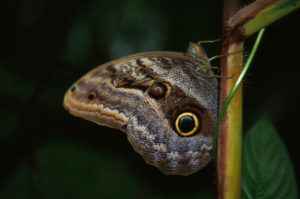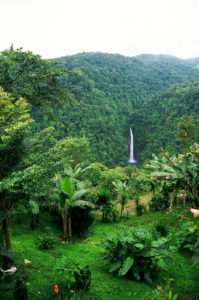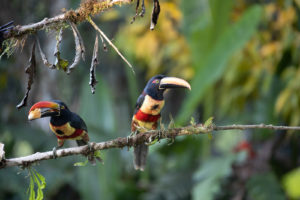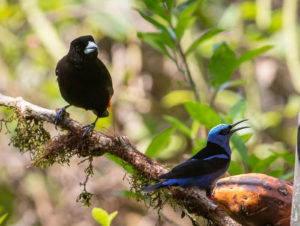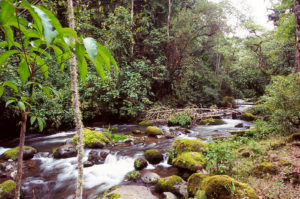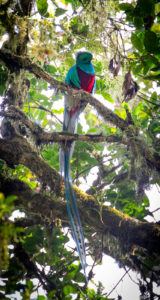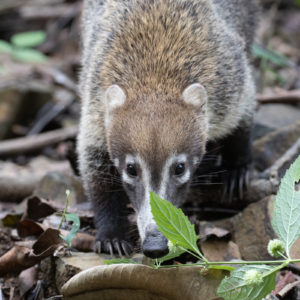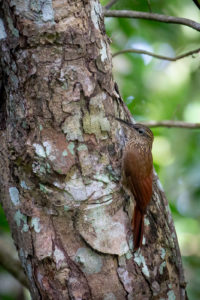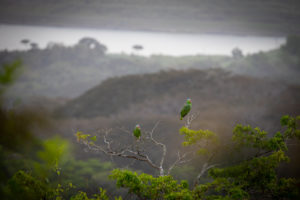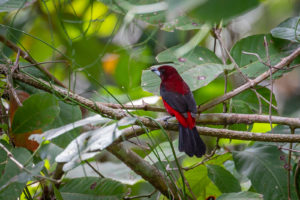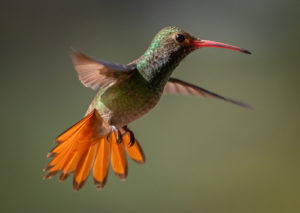Birding Costa Rica
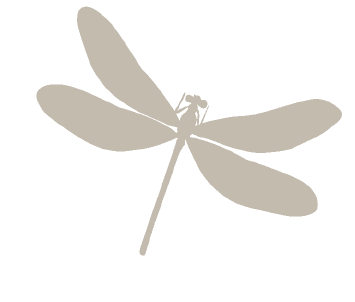
January 19 to 31 2024
$4,250 | ($500 deposit due upon registration)
Single Supplement: $500
10 participants max
C
osta Rica offers both a wonderful introduction to tropical birding and a destination to return to again and again. Twice the size of Vermont, the country has over 800 bird species, including 50 species of hummingbird alone. In addition to all the tanagers, parrots, and raptors, there are sloths, monkeys, orchids and beautiful butterflies to enjoy. Our group will visit a wide variety of tropical habitats in search of Scarlet Macaw, Resplendent Quetzal, Ocellated Antbird and so much more. Comfortable lodging in beautiful, birdy environments will make for an unforgettable experience.
Costa Rica is a place of kind hearts, good infrastructure, and spectacular biodiversity. It is among the safest, easiest, and most comfortable places to travel in Central and South America. Travelers concerned about visiting unfamiliar destinations will find that Costa Rica is the perfect gateway to tropical nature travel and birding.
Additional Information
Flow of the Day: The itinerary is designed to maximize our experience with Costa Rica’s great diversity of birdlife and ecosystems. We won’t, however, be rushing from place to place to chase the largest species list possible. Our goal is to spend time appreciating the species we encounter at an enjoyable pace. Birding walks begin in the early morning, and we travel slowly to allow for the best bird and wildlife encounters and observation.
Afternoon plans may allow for some rest time at the lodges, though this is not always feasible when we are transferring between lodges or birding far from the lodge on a given day.
Clothing: Pack light field clothing of neutral colors. Bring several pairs of long pants and comfortable, light, airy shirts. Long-sleeved (relaxed fit) shirts are useful for protection from the sun, as is a light hat or cap. Be sure to have a pair of comfortable walking shoes or hiking boots, plus a second pair of tennis shoes or sandals. A fleece, a hat, and gloves are important for our visit to higher elevation areas where it can be quite chilly. You may want more casual clothing for traveling or dinners. A small washcloth and handkerchiefs will be helpful.
Climate: Be prepared for the temperatures to be chilly sometimes in the mornings (50s), and to reach the upper 80s in the middle of the day. In the tropics, it is wise to be prepared for both strong sun and sudden rain.
Equipment: Bring a pair of binoculars, a field guide and a camera with extra batteries. Your guide will carry spotting scopes. Pack sunglasses and sunscreen, a small flashlight or headlamp, a small alarm clock (a smartphone will work), insect repellent, a small daypack, and a small folding stool if you get tired standing for long periods waiting for birds.
Physical Expectations: Much of the birding on this trip will be along roadsides or easily walked trails, but do expect some hilly and uneven conditions. Participants should be able to hike on moderate terrain up to 3 miles per day, and be ready to expect conditions that may be hot, cold, dry, wet, or anything in-between.
Health Considerations: Please consult your physician before the trip for any recommended immunizations. Mosquitoes and other small, biting insects can sometimes be a nuisance, especially in the forested areas. Chiggers are found in the grassy areas. We suggest repellent for your face and hands as well as your clothing. Permethrin-treated clothing works well.
Transportation: We will be traveling in a small bus. Trip capacity is limited for traveling comfortably in our vehicle.
Accommodations: All of the lodges where we’ll be staying are situated in or near ecological reserves. They are chosen for strategic access to great birding, rather than for the bells and whistles that come with more luxury resorts. That said, all lodges are clean and comfortable, and often allow for excellent birding right at the hotel property.
Meals: We'll have a hot meal each night for dinner at the lodge or in town. Breakfasts and lunches will be a combination of sit-down meals and picnics, depending on where we are. Like our accommodations, our dining arrangements are selected to have filling, tasty meals without spending our peak birding times sitting inside restaurants.
Chip Darmstadt, Birding Ambassador and "emeritus" executive director of North Branch Nature Center, is an avid neotropical birder and naturalist. Chip has guided birding trips around the US and around the world for nearly 25 years, observing over 2,000 bird species along the way. After first working as a field biologist in Monteverde, Costa Rica back in 1990, Chip has had the pleasure of bringing dozens of nature lovers to the country.
Leo Garrigues, our local guide for the trip, is a top-notch Costa Rican birder and guide. Leo has a gift for finding the skulkiest of antbirds and sharing his passion for his country’s birds. A birder since the age of six, Leo has been guiding birding and natural history tours for many years. Richard Garrigues, Leo’s father, is the author of The Birds of Costa Rica, the must-have field guide for the country.
What’s included:
- All lodging and meals.
- All ground transportation throughout the trip.
- Expert naturalist guides.
- Any entrance fees and park admissions.
- Use of high-quality shared spotting scopes.
- Pre-departure orientation session before the trip.
- Transfer from airport to arrival hotel.
What is not included:
- International airfare to/from Costa Rica.
- Travel insurance.
- Gratuities.
- Pre-trip expenses.
- Alcoholic beverages.
- Incidentals and extras in hotels/lodges.
Ready to go to Costa Rica?
Email [email protected] to get signed up.
Payment Schedule
- A $500 deposit is required to reserve your space on the trip.
- 50% of the trip balance will be due 6 months before the departure date.
- Single travelers must include the single supplement fee with this payment. Single rooms are limited on this itinerary, so please confirm with us that your request for a single room can be accommodated before sending payment.
- The remaining trip balance will be due 3 months before the departure date.
All payments can be made via check to: North Branch Nature Center, 713 Elm Street, Montpelier, VT 05602
Cancellation Policies
We understand that incidents and emergencies arise that may force you to cancel your trip. However, NBNC invests considerable time and, in many cases, non-refundable payments to lodges and local contractors to secure our rooms and programming. NBNC aims to be as flexible as possible in our refund policy, but a full refund of your payments may not be possible after the dates indicated. All cancellations must be made via email to NBNC.
-
Cancellation more than 180 days before the trip: Full refund of all payments.
-
Cancellation 90-180 days before the trip: Refund of any payments minus the $500 deposit. If your space is filled by another traveler, we will also refund your deposit.
-
Cancellation 30-90 days before the trip: No refund guaranteed. If your space is filled by another traveler, we will provide a full refund minus the $500 deposit.
-
Cancellation less than 30 days before the trip: No refunds guaranteed.
Here is an eBird list of all species seen in Costa Rica in January since 2019. The frequency bar charts will help give you an idea of how regularly each species is seen.
Itinerary
19 January: Arrive in Costa Rica and transfer to the Hotel Bougainvillea, where you will meet your local guide and have an evening welcome/orientation dinner.
20 Jan: Beginning at daybreak, we will spend a leisurely hour or so birding the grounds of the hotel. Those who are visiting the neotropics for the first time will have the chance to make acquaintances with some very common and widespread species such as Rufous-tailed Hummingbird, Tropical Kingbird, Blue-gray Tanager, Rufous-collared Sparrow, and Costa Rica’s National Bird, the Clay-colored Thrush. Several species of North American migrants will be present, along with resident species that might include Red-billed Pigeon, Lesson’s Motmot, Hoffmann’s Woodpecker, Crimson-fronted Parakeet, and Cinnamon-bellied Saltator.
After breakfast, we’ll travel over the Central Volcanic Cordillera to the Caribbean foothills, where our lodging is set in the middle of the rainforest, adjacent to the sprawling Braulio Carrillo National Park. Staying at ground level, we might encounter Slaty-breasted Tinamou, Olive-backed Quail-Dove, Uniform Crake, Sunbittern, Ocellated Antbird, Tawny-faced Gnatwren, Dusky-faced Tanager, and Tawny-crested Tanager. And perhaps we’ll cross paths with a mixed-species insectivorous flock containing such creatures as Streak-crowned Antvireo, Checker-throated Stipplethroat, White-flanked Antwren, Striped Woodhaunter, Brown-billed Scythebill, Ruddy-tailed Flycatcher, and Scale-crested Pygmy-Tyrant. But our lodge is also home to the Rainforest Adventures Aerial Tram and from the unique perspective of the gondolas gliding through the canopy we could get eye-level views of Lattice-tailed Trogon, Cinnamon Woodpecker, Green Shrike-Vireo, White-throated Shrike-Tanager, Blue-and-gold Tanager, or Emerald Tanager. Overnight at Tapirus Lodge. (Be sure to pack a flashlight so that you won’t miss out on the optional night walk—it’s also not a bad idea to have one in the event the power should ever go off at night anywhere during the tour.)
21 Jan: After breakfast, we’ll pay a visit to “Cope,” a local artist/naturalist who has turned his small yard into an avian oasis. As we sit just a few feet from the feeders, the parade of visitors that will entertain us and keep camera shutters clicking could include White-necked Jacobin, Bronze-tailed Plumeleteer, Black-cheeked Woodpecker, Olive-backed Euphonia, Montezuma Oropendola, Scarlet-rumped Tanager, and Red-legged Honeycreeper. A walk with Cope through a nearby forest patch will surely turn up some fascinating creatures, perhaps even roosting owls and bats!
Eventually, we will retrace our steps back up over the mountain and continue on to the southern slopes of Irazu Volcano. The afternoon will give us our first opportunity to meet some of Costa Rica’s highland specialties, such as Buffy-crowned Wood-Partridge, Talamanca, Volcano, and Fiery-throated Hummingbirds, Black-capped Flycatcher, Timberline Wren, Black-billed Nightingale-Thrush, and the extremely range-restricted Volcano Junco. At 11,000 feet in elevation, it can get quite cool near the summit, especially after dark when we will be looking for Dusky Nightjar, Bare-shanked Screech-Owl, and the near-mythical Unspotted Saw-whet Owl. Overnight at GrandPas Hotel.
22 Jan: We’ll have the entire day to explore the highland habitats on the upper slopes of Irazu Volcano, as well as the possibility of dropping down to the Valley of Ujarrás to search for lower elevation species including White-tailed Kite, Collared Aracari, Barred Antshrike, Cabanis’s Wren, Yellow-throated Euphonia, White-lined Tanager, Black-headed Saltator, and, following a fairly recent split, a bird found only in Costa Rica: Cabanis’s Ground-Sparrow. Overnight at GrandPas Hotel.
23 Jan: Today we travel from the Central Valley to the El General Valley, traversing the Talamanca mountains en route, which will allow us the chance to search for any highland birds we may not have seen as yet as the forests are home to Black Guan, White-throated Mountain-gem, Costa Rican Pygmy-Owl, Silvery-fronted Tapaculo, Ruddy Treerunner, Yellow-winged Vireo, Sooty Thrush, Black-and-yellow and Long-tailed Silky-flycatchers, Large-footed Finch, Flame-throated Warbler, Slaty Flowerpiercer, and the bird everyone wants to see: Resplendent Quetzal. Overnight at Hotel del Sur.
24 Jan: We’ll explore a variety of sites and habitats in the area with some of the more hoped-for species being White-crested Coquette, White-tailed Emerald, Snowy-bellied Hummingbird, Red-headed Barbet, Elegant Euphonia, Speckled Tanager, Streaked Saltator, and the stunning Turquoise Cotinga. More open areas might produce Striped Cuckoo, Roadside Hawk, Pale-breasted Spinetail, Fork-tailed Flycatcher, and Yellow-bellied Seedeater. Overnight at Hotel del Sur.
25 Jan: We’ll travel south along the PanAmerican Highway stopping along the way to look for Rosy Thrush-Tanager, Green Shrike-Vireo, and Ocellated Crake at known spots. Eventually, we’ll reach the San Vito area, where we’ll look for still more regional specialties such as Scaled Pigeon, Blue-headed Parrot, Lance-tailed Manakin, Northern Mouse-colored Tyrannulet, Lesser Elaenia, Bran-colored Flycatcher, and Thick-billed Euphonia. Overnight at Hacienda Don Paolo.
26 Jan: Before leaving the San Vito area, we’ll do a bit more birding and hope to find still more species for our growing list, perhaps getting good looks at Costa Rican Swift, Garden Emerald, Fiery-billed Aracari, Golden-olive Woodpecker, Chiriqui Foliage-gleaner, Black-chested Jay, Orange-billed Nightingale-Thrush, or Costa Rican Brushfinch. A spectacular bit of roadway takes us down to the lowlands of the Coto Valley, where we’ll spend the afternoon looking for open country species that could include Black-bellied Whistling-Duck, Plain-breasted Ground Dove, Southern Lapwing, Lesser Yellow-headed Vulture, Savanna Hawk, Yellow Tyrannulet, Scrub Greenlet, Red-breasted Meadowlark, and Ruddy-breasted Seedeater. Overnight at Hotel Centro Turistico Neily.
27 Jan: We’ll take advantage of the relatively cooler morning hours to search the Coto Valley area one more time for local specialties such as Veraguan Mango, Sapphire-throated Hummingbird, Red-rumped Woodpecker, and Brown-throated Parakeet. Our travels today will take us around the scenic northern (interior) end of the Golfo Dulce and onto the Osa Peninsula. Overnight at Danta Corcovado Lodge.
28 Jan: At dawn, we’ll spend some time on the bridge over the Rincon River, which is famous as one of the best places to see the extremely range-restricted Yellow-billed Cotinga. Among the many other species that we could see at the spot are Pale-vented Pigeon, Gray-cowled Wood-Rail, Golden-naped Woodpecker, Black-crowned Tityra, Shiny Cowbird, and perhaps our first views of the gaudy Scarlet Macaw. Birding forested areas on the lodge property and nearby sites could produce looks at Marbled Wood-Quail, Band-tailed Barbthroat, White Hawk, Black-throated Trogon, White-necked Puffbird, Rufous-tailed Jacamar, Black-striped Woodcreeper, Velvety Manakin, Bright-rumped Attila, and Blue Dacnis. Overnight at Danta Corcovado Lodge.
29 Jan: Before leaving the lodge, we’ll have one more chance to look for species endemic to the southern Pacific regions of Costa Rica and adjacent Panama, such as Charming Hummingbird, Baird’s Trogon, Orange-collared Manakin, Black-bellied Wren, Isthmian Wren, Riverside Wren, Spot-crowned Euphonia, and Black-cheeked Ant-Tanager, which is found only in a small area of southern Costa Rica.
We’ll travel north along the Coastal Highway, reaching the Tarcoles River in time for an afternoon boat ride. By now we may have seen most of the wading birds associated with wetland sites, so our attention will be focused primarily on the mangrove forest, where we’ll be looking for birds found primarily in this unique habitat. Our targets include Northern Scrub-Flycatcher, Panama Flycatcher, Mangrove Vireo, the mangrove race of Yellow Warbler, and another bird found only in Costa Rica, Mangrove Hummingbird. Additionally, we’ll be searching for species such as Boat-billed Heron, Plumbeous Kite, Common Black Hawk, American Pygmy Kingfisher, Peregrine Falcon, Yellow-naped Parrot, Cinnamon Becard, Rufous-browed Peppershrike, and Prothonotary Warbler. Overnight at Hotel Villa Lapas.
30 Jan: We’ll spend the morning in Carara NP, where a mixed-species flock could provide us with excellent views of White-whiskered Puffbird, Black-hooded Antshrike, Dot-winged Antwren, Dusky Antbird, Tawny-winged Woodcreeper, Plain Xenops, Sulphur-rumped Flycatcher, Tawny-crowned Greenlet, Long-billed Gnatwren, and White-shouldered Tanager. Carara is also a good place to look for understory species and with luck we might get to see Great Tinamou, Ruddy Quail-Dove, Gray-chested Dove, Streak-chested Antpitta, or Black-faced Antthrush. After lunch, we’ll return to the Central Valley. Overnight at Hotel Bougainvillea.
31 Jan: Transfer to the airport for your departing flight.

713 Elm Street
Montpelier, Vermont 05602
(802) 229-6206
Hours: Center Open Monday-Friday 9-4
Trails Open 24/7

